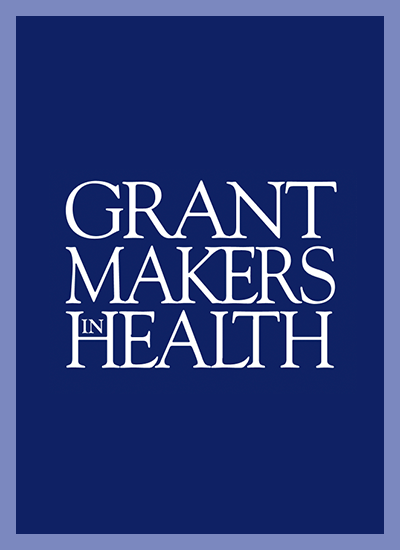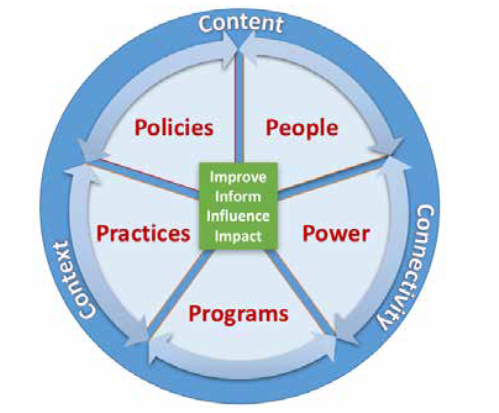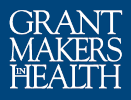June 2018

Huilan Krenn, Director of Learning and Impact, W.K. Kellogg Foundation
Each year, GIH asks health funders to share their thoughts on our annual conference theme. This year, we’ve asked evaluators from foundations to reflect on our 2018 conference theme, Navigating Currents of Change.

The invitation to write a GIH annual conference essay made it to my inbox when I was in China taking part in my father’s 100th day memorial service. His passing came suddenly and the distance made it impossible for me to attend his burial. Losing him has turned my life upside down and I had felt like a paper boat in a turbulent ocean. Talking about change!
The 12-hour-time difference kept me wide awake at 2:00 a.m. Vividly feeling his presence everywhere, my heart ached so much that my tears stopped and my throat started closing up. I was shocked at my emotional reactions, stronger than three months before when I first learned of my dad’s passing. The evaluator inside me oddly wondered how I could measure such pain. To distract myself from the emotional rawness, I turned on the computer and started checking emails. The top one was the request from Grantmakers In Health. The topic? Evaluation in “Navigating Currents of Change.” Without blinking an eye, I said yes, I would write an essay.
When the sun rose, I put on my workout clothes and headed out to the subdivision park to jog, as I do every time I visit my parents. Then it dawned on me: the deadline for the essay was tight; my English tends to deteriorate after a home visit when Chinese is spoken everywhere; and I did not even have an idea of what I was going to write about.
I found a quiet spot by a fountain and said a quick prayer. I asked God for inspiration and for my dad’s spirit to ground me. Then I turned on the downloaded “On Being” episodes on my phone. When I finished jogging, I also finished listening to Ruby Sales’ “Where Does It Hurt”. To my pleasant surprise, this amazing woman helped me identify my own pain point and provided me with the essay’s frame.
Like most of us, Ruby Sales does not “like aging a whole lot.” But one of the things she does like “is that from where I sit on my front porch, I have hindsight, insight, and foresight,” which all come with aging. With hindsight, insight and foresight, we are likely to be better equipped to navigate currents of change in our lives and in our organizations. How do we get all the “sights” without having to become senior citizens? Our experience at W.K. Kellogg Foundation tells us that this “beautiful gift” of aging can be obtained by wisely using evaluation as a tool.
To work towards our north star of “thriving children with working families in equitable communities,” we use a dynamic systems approach to ground our evaluation in the communities and to address the root causes of racial inequities. This approach examines people, power, programs, practices, and policies (5P) in their content, context, and connectivity (3C), to improve, inform, influence, and impact (4I). The following graphic describes the relationship among these factors and dimensions:

At the foundation, we define the terms this way:
- People: individuals’ behaviors, attitudes, perceptions, and values.
- Power: allocation, distribution, and ownership of resources (e.g. financial, positional).
- Programs: interventions designed and implemented as manifestation of strategies or tactics.
- Practices: patterns of individuals’ behaviors formed and reinforced over time.
- Policies: regulations, legislation, and rules across multiple levels and domains (e.g., institutional, local, state, national).
- Content: substance of the 5Ps.
- Connectivity: linkages, interfaces, and interactions among the 5Ps.
- Context: environment, background, and situational dynamics where the 5Ps and 3Cs are exhibited and moved.
- Improvement: betterment of a system’s components through changes in targeted 5Ps or 3Cs; for example, the purpose could be better program design or delivery; better implementation of effective or promising practices; more equitable power distribution; more conducive community conditions to stimulate people’s attitude change; or better connection between policy and practice.
- Inform: raise the visibility of the likely lever(s) of a systemic change so that the levers can be seen by the targeted actor(s); for example, the change efforts resulting in valuable insights from the community constituencies to identify their future actions; or insights for policymakers to ensure equitable constituency-centered policy implementation.
- Influence: mobilize factors to enable a systemic change; for example, the goal of system change could be indirect but powerful shifts of resource allocation to ensure equity. This “I,” unlike others, might be intangible but it is one of the most potent objectives. Lifting it up in the evaluation design could help clarify the overall goal and possibly also identify and/or mobilize the most relevant lever(s) of change.
- Impact: demonstrate the effect of a systemic change. This “I” tends to be longer term, resulting from the other “I” or from the Ps/Cs.
It is important to note that the approach is not for an evaluator to measure every “P”, “C” and/or “I”, nor to be used as a how-to guide (W.K. Kellogg Foundation 2017). Rather, the approach is to help evaluators understand and prioritize what to evaluate and how to evaluate foundation strategy development and implementation in communities with dynamic characteristics. Specifically, it helps evaluators, in their design and implementation of evaluation, to take a holistic view of the foundation’s strategies and their linkage to the desired outcomes. It also helps clarify how past efforts affect the present while connecting tangibles (symptoms) to the intangibles (root causes). All of this is in service of evaluating whether or not we are making a real difference in the community. In short, used wisely, it is a tool that lets the evaluator provide the foundation with the necessary hindsight (did the foundation’s strategies work), insight (in what circumstances they worked or did not work) and foresight (how the strategies need to be adjusted or changed to achieve the intended results). The result is that foundation program staff and leadership are able to make data-driven evidence-based decisions with confidence to better navigate “currents of change”.
Interested in learning more? Dr. Beverly Parsons and I coauthored a recent Foundation Review article titled “PCI Evaluation Framework” to describe the approach in more detail (Parsons and Krenn, 2018).
References
The W.K. Kellogg Foundation. The W.K. Kellogg Foundation Step-by-Step Guide to Evaluation: How to Become a Savvy Evaluation Consumer. November 29, 2017.
Parsons, B. & Krenn, H.Y. (2018). PCI Evaluation Framework, The Foundation Review, Vol. 10:1, p.31-50.
